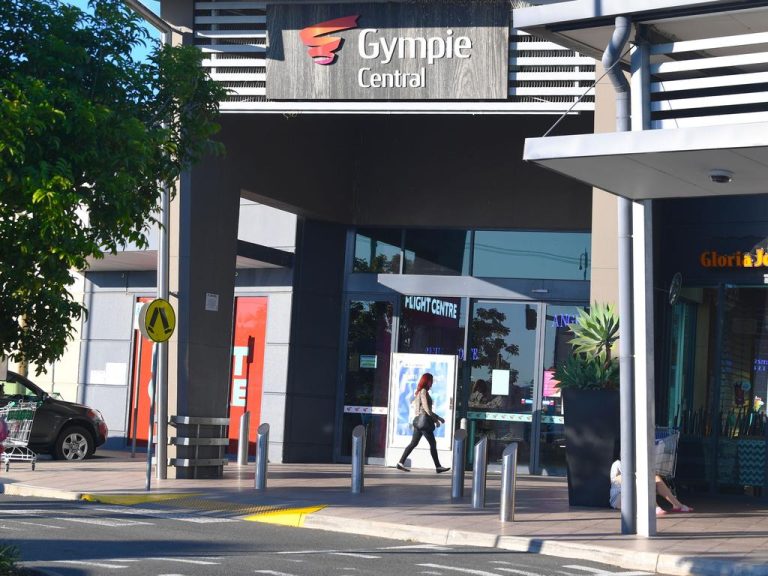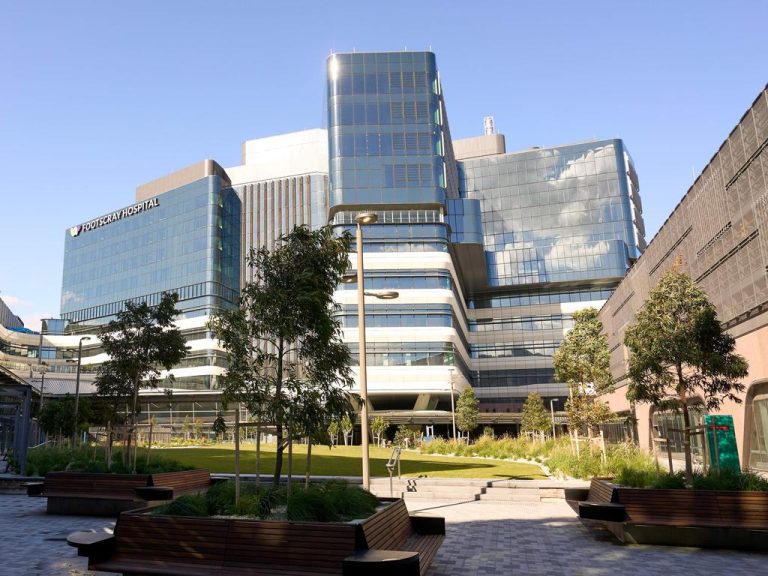Game over? How Australia’s arcades are levelling up for the next generation
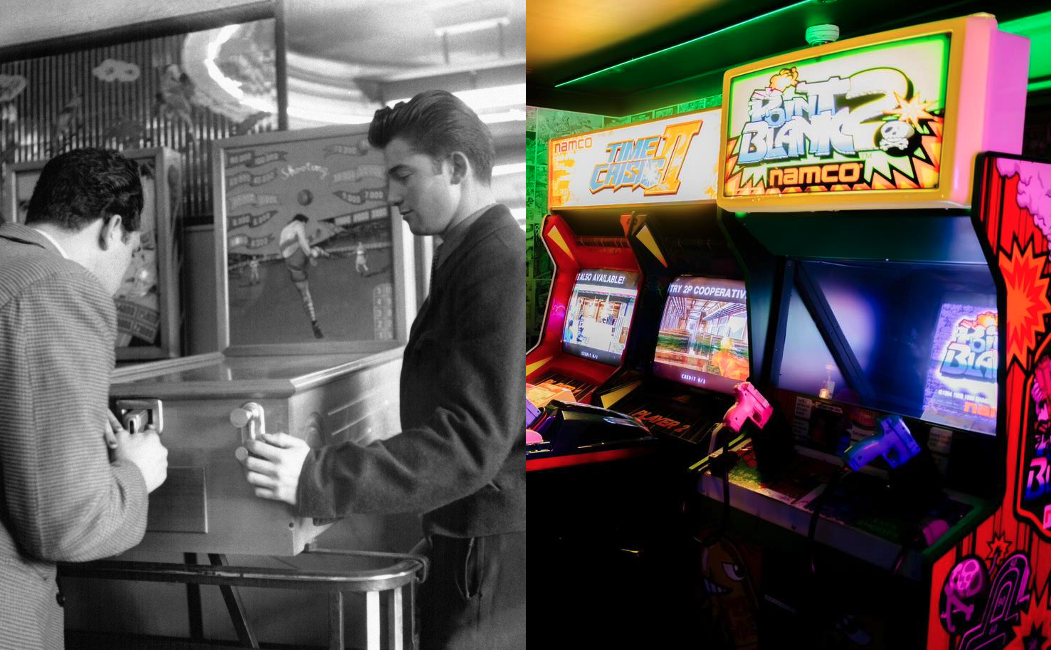
For generations of Aussie kids, weekends once meant a pocketful of coins and hours lost in dimly lit video game arcades.
Ubiquitous in city centres, regional towns and seaside strips, they were the playgrounds of Boomers, Gen Xers and Millennials alike, stacked wall-to-wall with classics like Pac-Man, Donkey Kong, Street Fighter II, Daytona USA and Time Crisis.
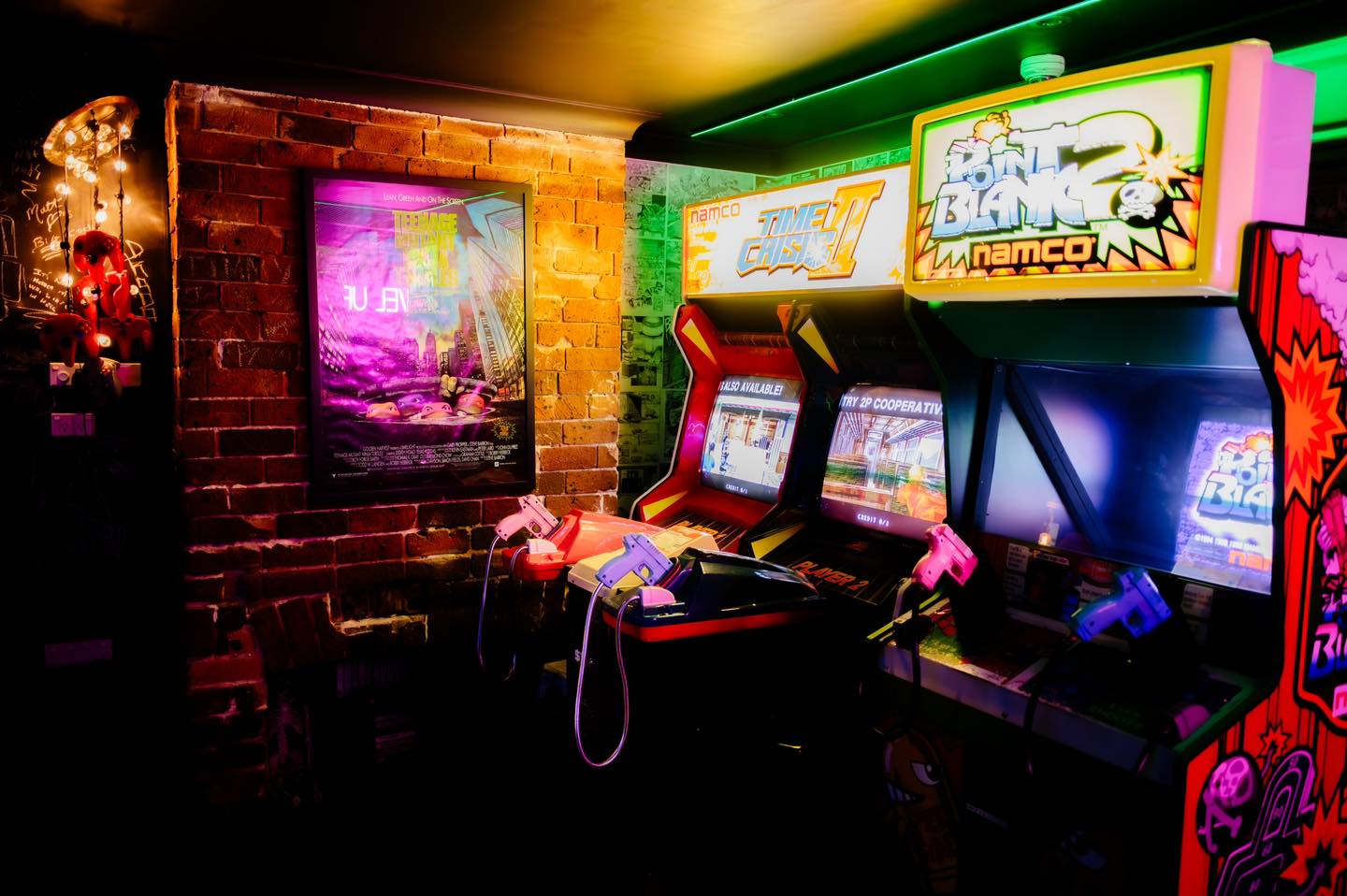
Generations of Aussies grew up with gaming arcades, though a new wave of nostalgia is bringing them back. Picture: Supplied, Astro’s Arcade Bar
Sadly, most of these social hubs have all but vanished from Australia’s urban and retail landscape – though as a wave of nostalgia sweeps through the next generation, the classic arcade is being revived and evolving for the modern day consumer.
Old classic: Independent retro arcades
Far from the money spinners they were in the ‘80s and ‘90s, old school pure-play arcades are now few and far between.
But for many classic gaming enthusiasts, places like Astro’s Arcade Bar on Newtown’s King Street, while extremely rare, can still be found keeping the dream alive.
Owner Adrian Sanchez says running an independent video game arcade in 2025 is more a labour of love than a lucrative business venture.
“You wouldn’t get into something like this unless you have a deep passion for it. Luckily, I have a passion for retro games and the hospitality industry, and positioned Astro’s to accommodate both,” Mr Sanchez told realcommercial.com.au.
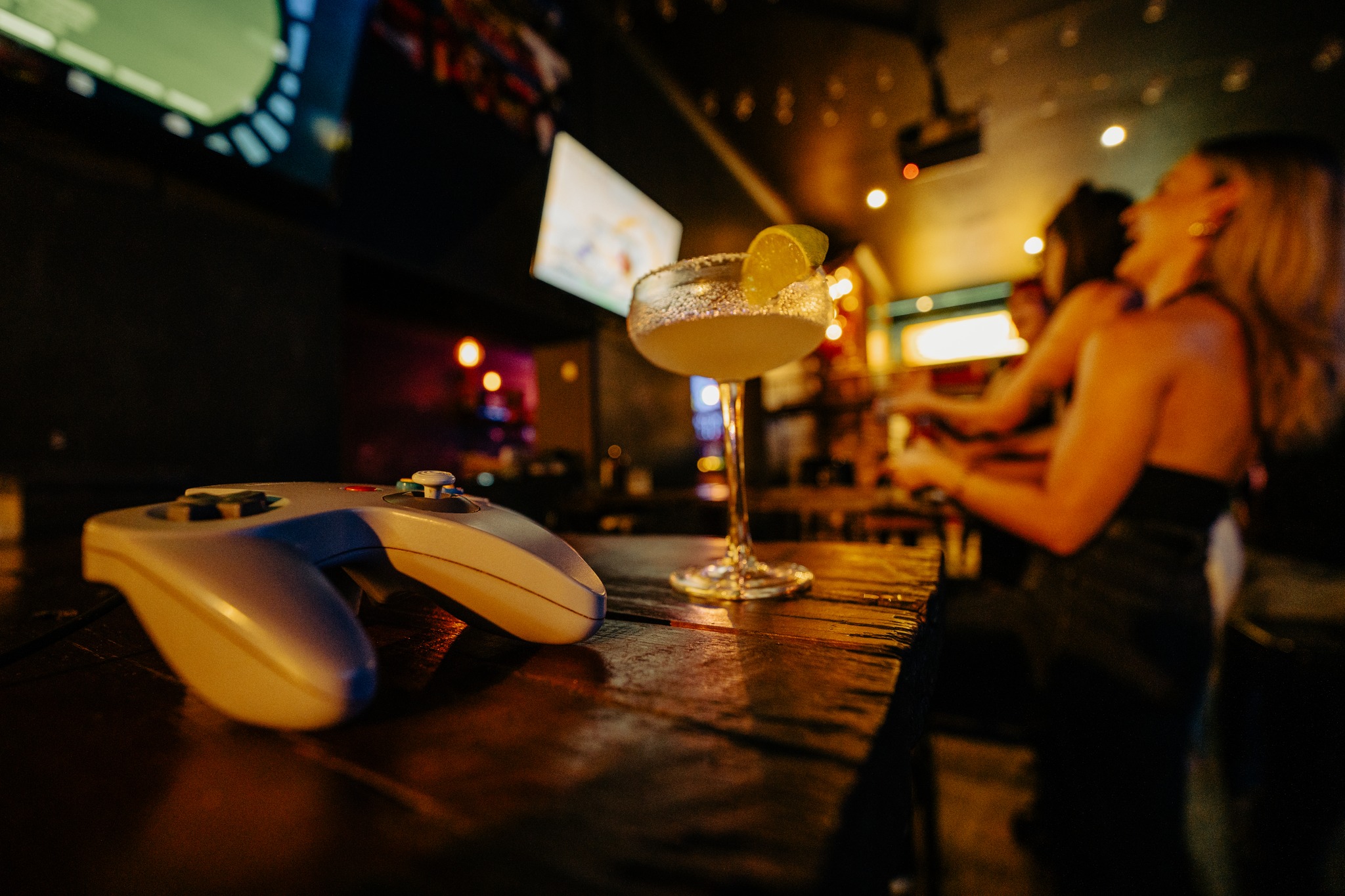
Astro’s Arcade Bar in Newtown supplements revenue with a cocktail bar and food menu. Picture: Supplied
“The days of running a classic gaming arcade on its own are long gone. Now you need something else to supplement it, like a bowling alley, laser tag, or a bar with food and drinks. That is what’s going to maintain a business like this.”
When 1989 Arcade Bar closed in 2024 after seven years of operation, Mr Sanchez took over the premises and relaunched the venue as Astro’s. The decision was not without its detractors.
“There are always going to be people who say, ‘What are you doing? This is crazy.’ But you just have to block out the noise and do what you feel is right for you. This is my passion, so it was an easy choice.”
While Astro’s Arcade Bar is a nostalgic throwback, it’s also part of a much longer lineage of gaming arcades in Australia.
Penny arcades and pinball parlours
The origins of gaming arcades can be traced all the way back to the early 1900s, when penny arcades were imported from the US and Europe to Aussie seaside towns like Manly and St Kilda via fairgrounds and carnival culture.
Featuring coin-operated ‘penny per play’ novelties such as mutoscopes (flip-card movies), fortune tellers, shooting galleries and strength testers, these penny arcades provided affordable entertainment for families.
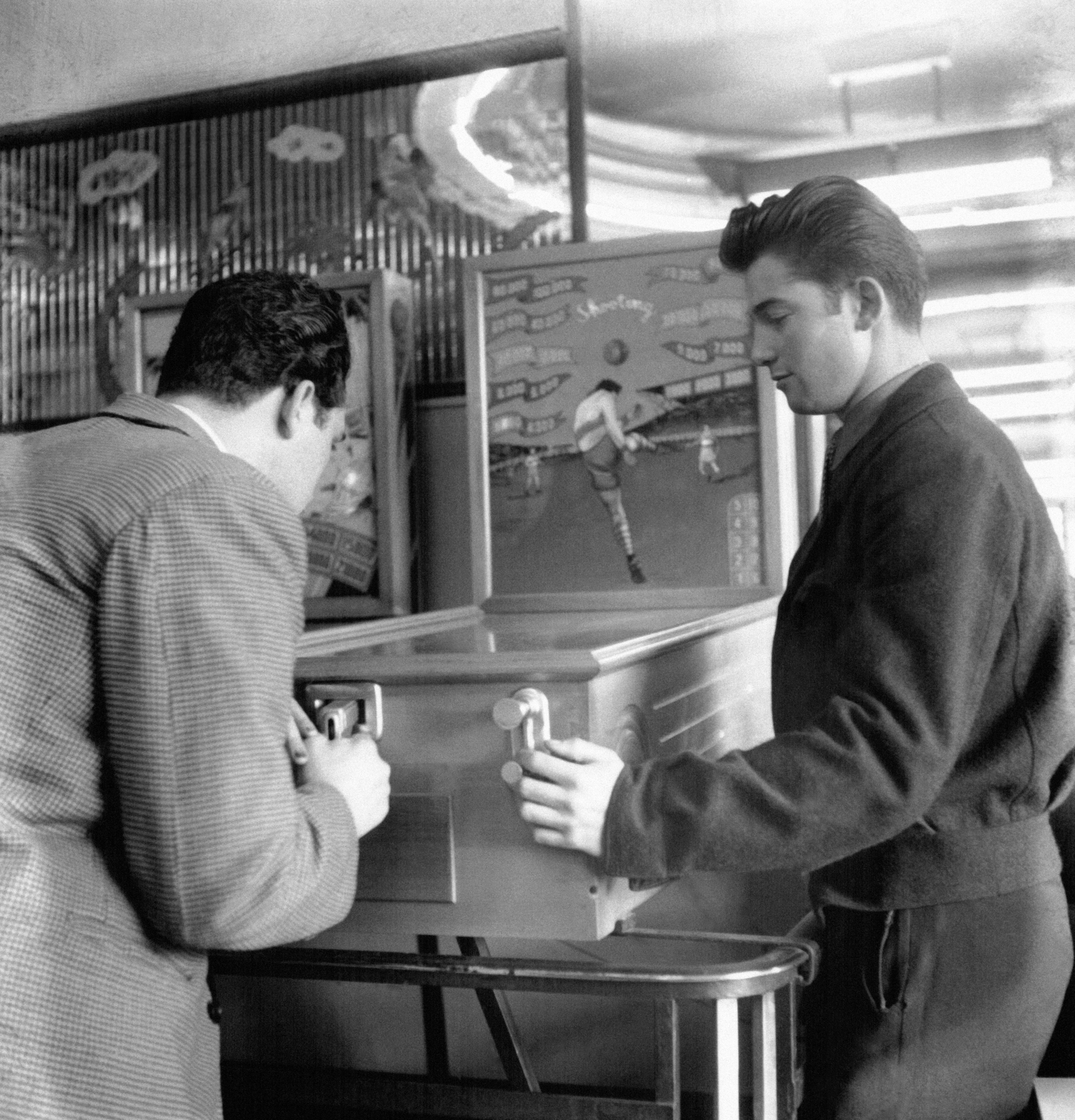
Penny arcades provided affordable entertainment for families in the 1950s. Picture: Getty
When pinball machines arrived in Australia in the 1930s, they became popular in milk bars, bowling alleys, and pubs – long before the proliferation of poker machines began in the 1970s.
Throughout the 1950s, stand-alone pinball parlours began popping up in cities. They were popular hangouts for teenagers and often frowned upon by authorities.
Frank Sebastyan, founder of iconic gaming arcades Downtown and Magic Mountain, remembers the Adelaide pinball parlours of his youth in the 2023 documentary, Still Standing.
“Most of them were sleazy joints on the rough edge of town. Families wouldn’t go into those places because they didn’t feel comfortable,” he said.
Video killed the pinball star
In 1973, Pong, arguably the world’s first video arcade game, began appearing in pinball parlours, marking the industry’s first shift from analogue to digital.
However, it was the arrival of Space Invaders in 1978 that truly turned video games into a global craze, opening the floodgates for video arcades to take root in Australia throughout the 1980s.
Arcades like Downtown in Adelaide, Video City in Sydney, and Funland in the regional towns of Ulladulla and Coolangatta became iconic.
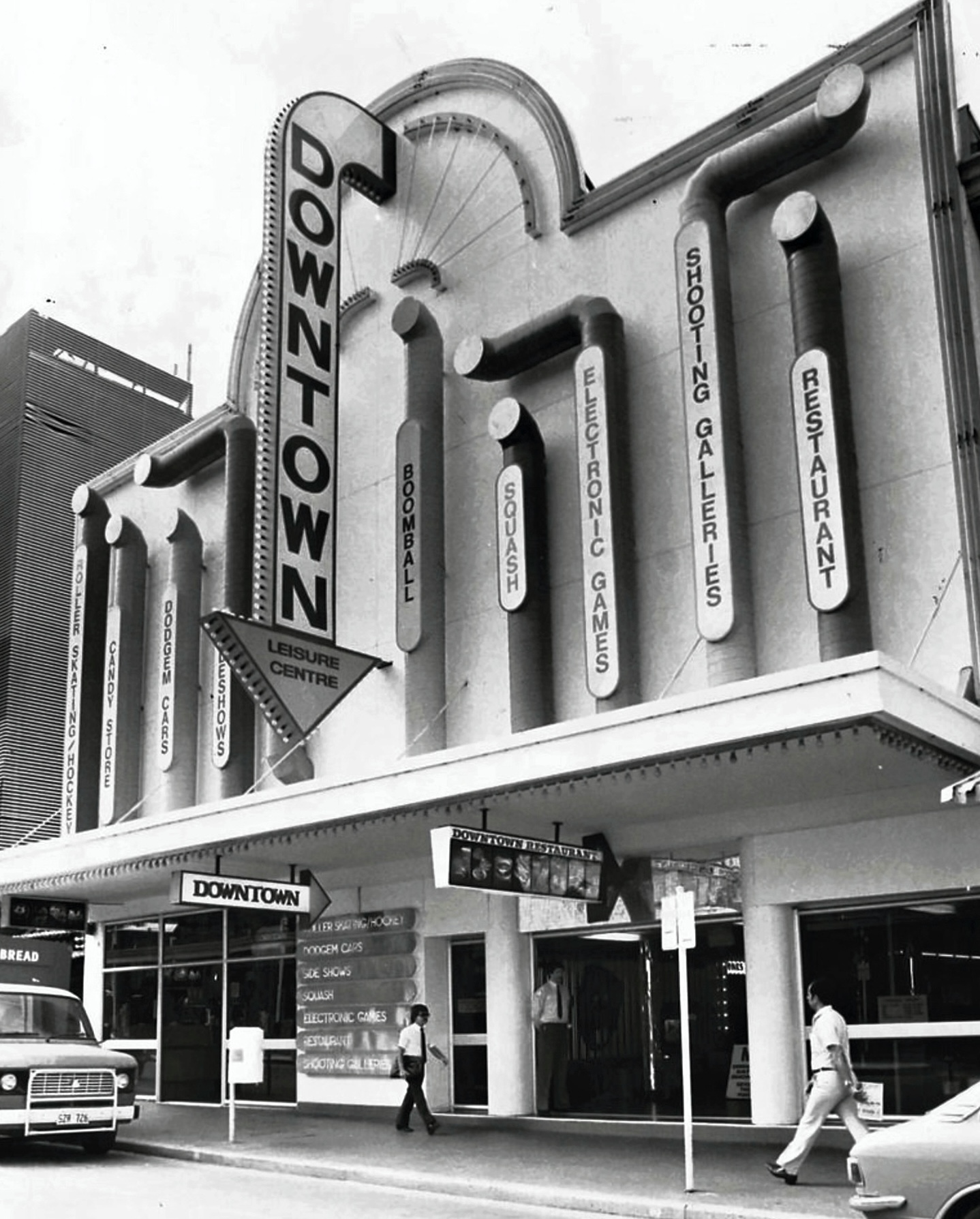
Downtown Leisure Centre in Adelaide featured roller skating, dodgem cars and a games arcade. Picture: Facebook
One of the era’s most legendary was Adelaide’s Downtown Leisure Centre, which first opened just prior to Christmas in 1979. The 1964 song ‘Downtown’ by British singer Petula Clark was used to promote the launch.
“That was a first, because previously record companies were totally reluctant to give anybody the rights to use their music for commercial purposes. But we got the song and used that as an advertising campaign and from day one. The whole thing was a rip roaring success,” owner Frank Sebastyan recalled in Still Standing.
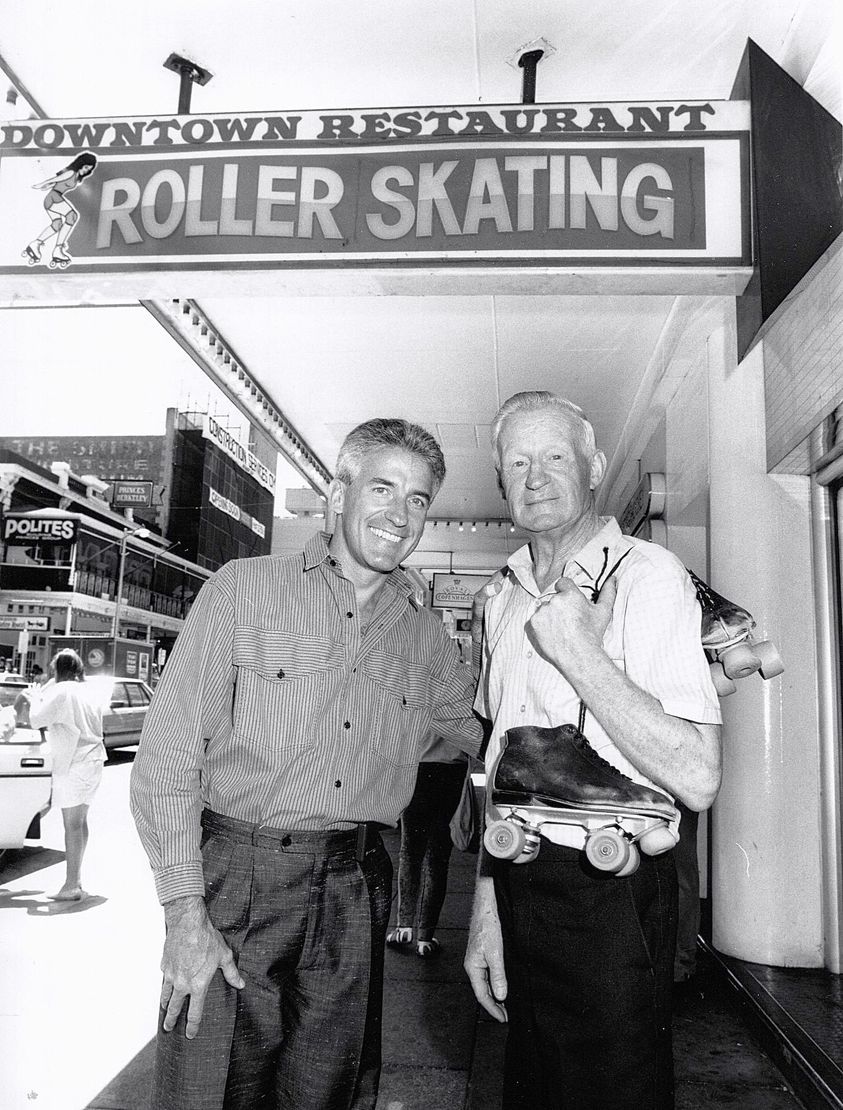
Frank Sebastyan (left) helped establish iconic Adelaide amusement centres Downtown and Magic Mountain. Picture: Facebook
More than just a gaming arcade, Downtown was a 60,000 square feet leisure centre which also boasted dodgem cars, a shooting gallery, mini golf course, even a disco skating rink.
“I brought over an expert roller skater from San Jose in America. He held classes to instruct locals in Adelaide how to roller skate to the disco music,” said Mr Sebastyan.
“Air hockey had also never been seen in Australia, so I went to Disneyland and I found a big area there which had been dedicated to about 20 air hockey machines. I said to myself, “Gee, we’ve got to have some of those.” So, we did.”
Downtown Leisure Centre closed in the mid-80s but was succeeded by Magic Mountain – an even more ambitious arcade turned theme park.
1990s: Big chains and the arrival of home gaming
While the 1980s were the golden age of Australian video game arcades, the nineties marked significant change, with the tail end of the decade a rough time for arcades and leisure centres.
Classic arcade cabinets gave way to big Sega and Namco machines like Daytona USA, Time Crisis and Dance Dance Revolution.
Moreover, independent operators began to face strong competition from the emergence and expansion of chains such as Playtime, Intencity and Timezone.
But the biggest change to the industry was the arrival of Nintendo and Sega home entertainment systems, which launched in the late 80s, but found major nationwide success during the early 90s.
As home consoles became more affordable, the appeal of arcades quickly declined. Instead of paying for each game, families could buy a cartridge once and enjoy unlimited play at home.
The introduction of the GST only compounded the problem, adding an extra cost to every play. With players unwilling to feed more than a dollar into machines, operators faced an increasingly tough battle to stay afloat, with many gradually closing their doors.
Timezone and the rise of family entertainment
While many independent operators faded through the late 90s and 2000s, Timezone grew into Australia’s largest and most recognisable arcade chain, shifting its focus from classic cabinets to family-friendly gaming.
Its origins, however, began decades prior, with the first Timezone arcade opening in Perth in 1978.
“My father owned the property which was leased to the Salvation Army. When they vacated the lease, I decided to build a gaming arcade. We had had several other different brands beforehand, but that was the first Timezone,” founder Malcolm Steinberg reflected earlier this year.
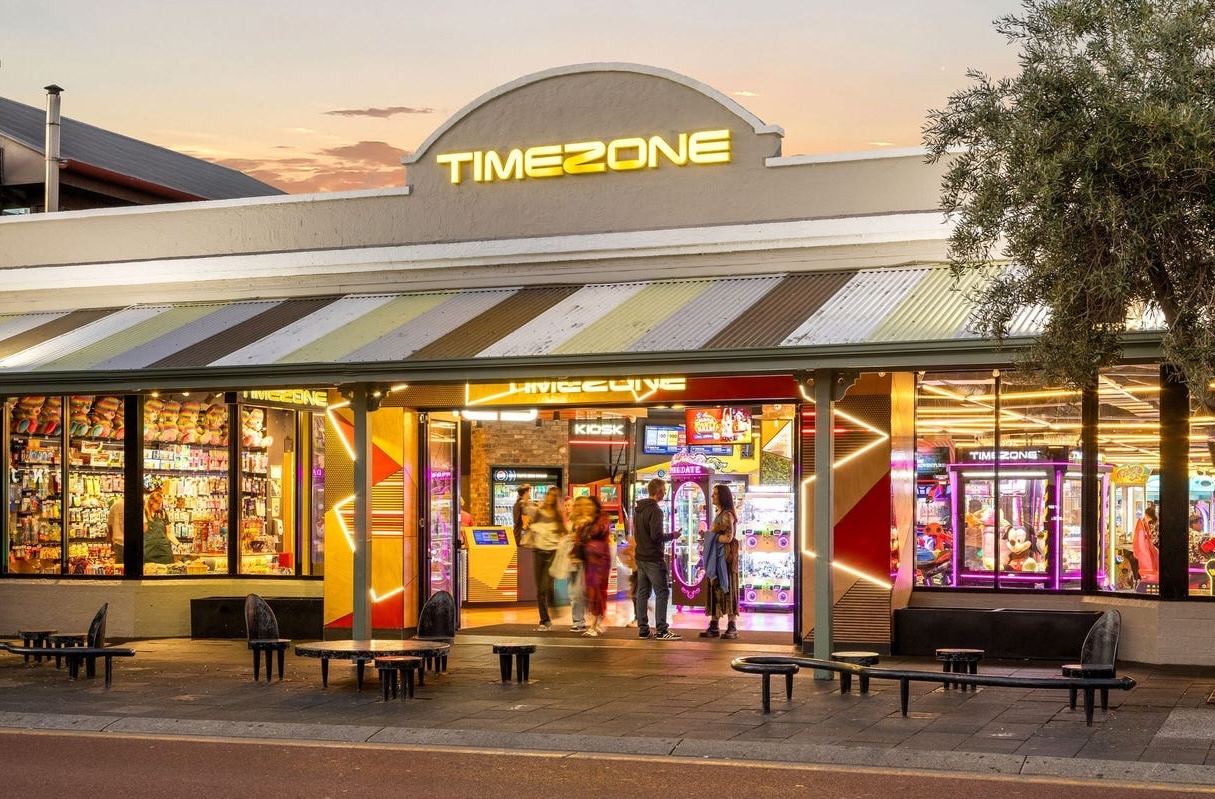
The freehold of Timezone Fremantle has hit the market, with the arcade remaining in the same spot since 1981. Picture: realcommercial.com.au
Throughout the early 80s, Timezone expanded to the east coast, first in Adelaide and then Melbourne, Brisbane and Sydney. A key to its success was securing space in shopping centres rather than relying on standalone venues.
“It wasn’t easy, because at that time shopping centre developers didn’t really like the idea and it was very hard to get space,” Mr Steinberg said.
“It’s quite the reverse now, but in those days, there was a fair amount of pushback and therefore the space we got was sort of second tier or third tier space within the shopping centre. And it was only after time that the developers realised [Timezone] was a popular destination for families, that they started to take more notice of us.”
Today, of the 90 Timezone locations across Australia, around half are in shopping centres.
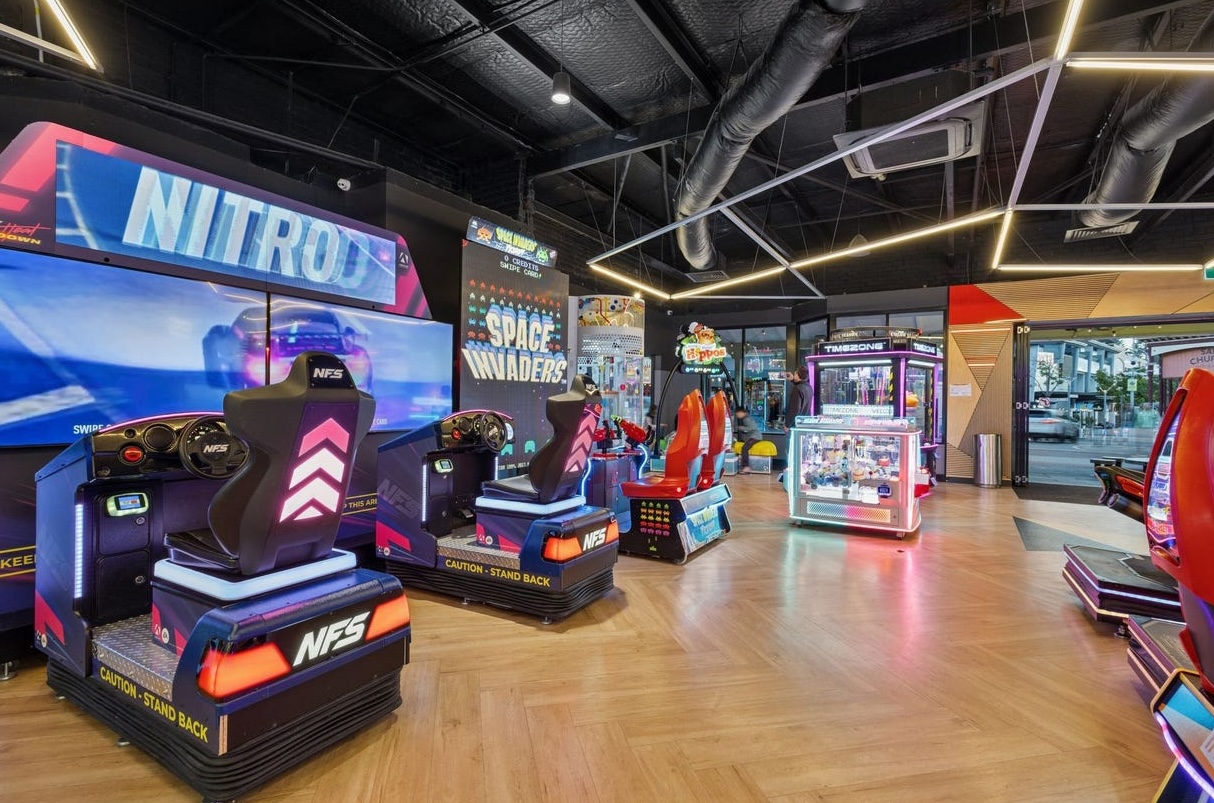
Old classics such as ‘Space Invaders’ have been modernised for the next generation of arcade players: Picture: realcommercial.com.au
Jason Bogie, general manager of real estate for parent company The Entertainment & Education Group (TEEG), told realcommercial.com.au that malls remain their best fit.
“They provide a good balance of daytime footfall and a healthy nighttime economy, with strong dining precincts and cinemas. Locations like these also encourage longer dwell time and attract customers from a greater catchment radius.”
Tourist towns have also proved popular for Timezone, with the brand’s standalone arcade in Fremantle still going strong since 1981.
“That one’s a bit of an institution which attracts people from all over Perth. We had Daniel Ricciardo visit there to play one of the racing games,” Mr Bogie said.
As for the recent arrival of American chain Chuck E. Cheese in Joondalup and the upcoming launch of Australia’s first Dave & Buster’s in Clarkson later this year, it raises questions surrounding Timezone’s competitive landscape.
“I think Chuck E. Cheese is aimed at a much younger market, while Dave & Buster’s is targeted more to young adults, so I think we’re all running in different lanes,” said Mr Bogie.
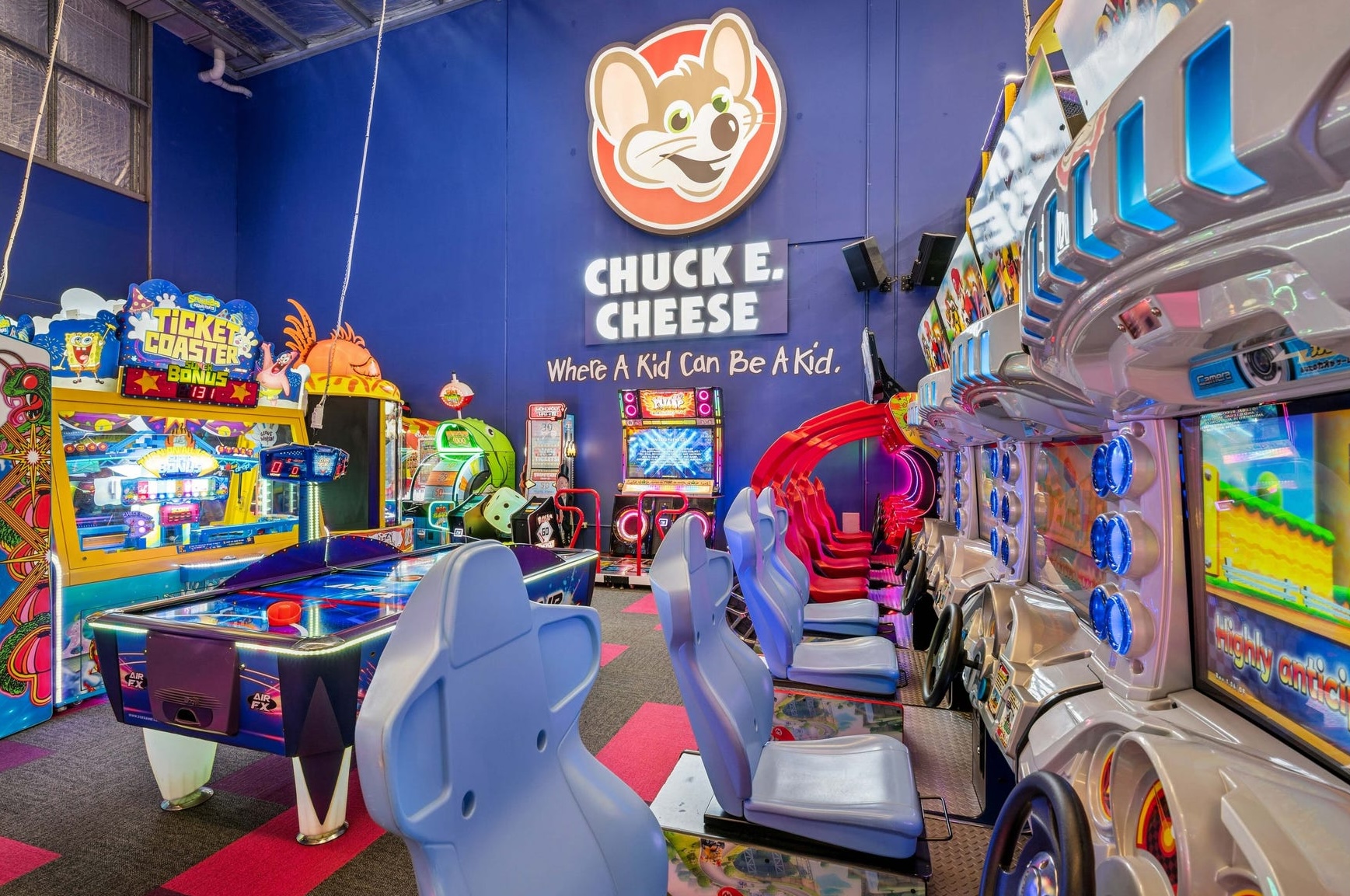
Australia’s first Chuck. E Cheese opened in Australia in September 2025. Picture: realcommercial.com.au
“But we are certainly aware of them, and it means we can’t remain complacent.”
Keeping the dream alive
Despite a recent wave of independent closures – from Brisbane’s much-loved 1UP Arcade, to Geelong’s Ms Bartronica, and even the short-lived Retro Arcade Stanthorpe –it isn’t game over for Australia’s arcade scene just yet.
The rebirth of Newtown’s 1989 Arcade Bar as Astro’s Arcade Bar is proof that it’s not only older generations keeping the tradition alive. Alongside nostalgic fans revisiting their youth, a new wave of younger players are discovering the joy of classic games for the very first time.
“We still get the older generations coming in and going, ‘Wow, I remember playing this when I was 15 years old,’” Adrian Sanchez said.
“But we also get these young kids coming in who are playing these classic video games for the first time and falling in love with them. It’s exciting to see.”


